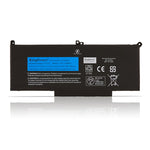ショッピングカートに商品がありません。
Low temperature lithium-ion battery pack solution

In low temperature environments, the performance of lithium-ion batteries is not ideal. When commonly used lithium-ion batteries work at -10℃, their maximum charge and discharge capacity and terminal voltage will be greatly reduced compared to normal temperature. When the discharge temperature drops to -20℃, the available capacity will even be reduced to 1/3 of that at room temperature, 25℃. When the discharge temperature is lower, some lithium batteries may even be unable to carry out charge and discharge activities and enter a "dead battery" state.
Effect of low temperature on lithium battery performance
Capacity and energy density
In low temperature environments, the capacity and energy density of lithium batteries will be significantly reduced. This is because the viscosity of the electrolyte increases and the ion conduction rate slows down, resulting in a decrease in the transmission efficiency of lithium ions in the electrolyte.
Charging and discharging efficiency
When charging at low temperatures, the charging efficiency of lithium batteries decreases, which may lead to incomplete charging. When discharging, the discharge efficiency will also be affected due to the reduction in ion conduction speed.
Cycle life
Low-temperature charging and discharging will have a negative impact on the cycle life of lithium batteries. Due to the decomposition of the electrolyte and the deposition of lithium metal, the battery capacity will gradually decrease, and the cycle life will be shortened.
Safety performance
In low temperature environments, the safety performance of lithium batteries will also be affected. In the case of overcharging or over-discharging, the battery may experience thermal runaway, generating high temperatures and high pressure, causing the battery to catch fire or explode.
What are the low-temperature lithium-ion batteries?
Low-temperature lithium-ion batteries mainly include low-temperature polymer lithium batteries, low-temperature 18650 lithium-ion batteries, and low-temperature lithium iron phosphate batteries.
Low-temperature polymer lithium battery
Low-temperature polymer lithium batteries can be manufactured in shape and size according to the space reserved for the equipment, so that the equipment can fully meet more ideal actual use requirements. However, their disadvantages are also obvious. Their production cost is relatively high, and they are only suitable for equipment that is not sensitive to price.
Low-temperature polymer lithium batteries are the same as low-temperature lithium iron phosphate batteries. Under the same voltage and capacity conditions, they are lighter than low-temperature 18650 lithium-ion batteries.
Low temperature 18650 lithium battery
The low-temperature 18650 lithium battery is a cylindrical steel-shell lithium battery of fixed size. Since the electrolyte used in the cylindrical steel-shell 18650 lithium battery is liquid, the discharge performance in a relatively low temperature environment varies greatly and is prone to failure.
At low temperatures above -20°C, the discharge capacity is above 75%. If it is below -20°C, the capacity drops sharply, and the discharge capacity may be only about 40% of the original. If it is below -30 °C, the battery does not work.
In general, in low-temperature environments, 18650 lithium batteries have a certain position due to their low cost advantage; due to their fixed size, the battery has no advantage under high-current discharge.
Under the same discharge performance requirements of the equipment, the 18650 lithium battery is relatively heavy and has a fixed shape, which is not conducive to the concept of saving space in the equipment.
The maximum capacity of 18650 lithium batteries is limited. In the same space, the capacity of low-temperature soft-pack lithium batteries can be several times that of 18650 lithium batteries.
Low temperature lithium iron phosphate battery
There are two types of packaging for low-temperature lithium iron phosphate batteries. One is a steel shell, which is currently mostly used in the field of new energy batteries, such as energy storage batteries and new energy vehicle batteries; the other is a soft-pack lithium iron phosphate battery with an aluminum-plastic film as the outer packaging. The performance of this type of battery is basically the same as that of a polymer lithium battery, but its low-temperature performance is better than that of a 18650 lithium-ion battery, but slightly worse than that of a polymer lithium battery.
Excellent low temperature working performance: Discharged at 0.5 °C at -40°C, the discharge capacity exceeds 65% of the initial capacity.
When discharged at 0.3C at -35℃, the discharge capacity exceeds 75% of the initial capacity.
Wide operating temperature range, -40°C to 55°C; can be charged at -20°C.
The size is flexible, and the size and shape of the battery can be designed according to customer needs.
Do you need a low-temperature rechargeable battery?
For standard lithium-ion batteries, the discharge temperature range is between -20°C and 60°C, while the charging temperature range is between 0°C and 50°C. If the battery needs to operate at temperatures outside this range, unique high- or low-temperature lithium-ion batteries are required to prevent damage, fire, or even explosion.
Low-temperature lithium batteries are widely used due to their advantages such as light weight, high specific energy, and long life. Low-temperature lithium batteries are made of special materials and processes and are suitable for use in sub-zero cold environments.
If your device requires the battery to be discharged at -20°C or lower, then there is no doubt that the low-temperature battery pack will be your right choice.
If this article still doesn't help your laptop battery, you can buy a new battery at BatteryMall.com
If you want to learn more about batteries, please visit: BatteryMall.com/blogs/suppor








